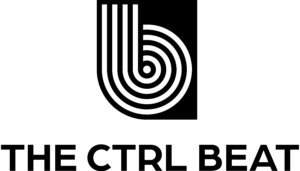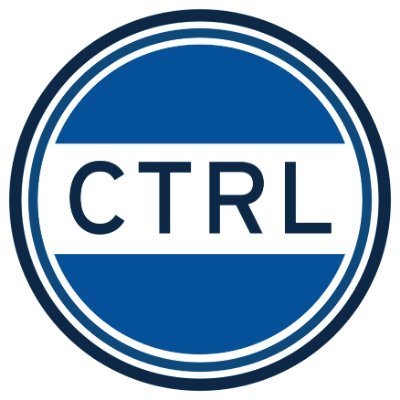Laying the Foundation for Clarity, Creativity, and Consistency in Higher Ed Courses
By Krisztina Domjan
I keep a log of office hour meetings with my students, and I noticed a couple of things lately. Up until three years ago, they would ask mainly about the content of missed classes, assignment details, or an explanation of a more complex concept or academic skill they are expected to demonstrate. Recently, however, students’ concerns have revolved around extension requests on tasks, or the revision of previously submitted assignments and whether I would offer incentives for revision (yes, I do, and it is normally 10%). My key objective and responsibility as an educator are that the learners each semester meet the learning outcomes of the courses that I teach and that together we thrive in an inclusive learning-centered environment. I constantly seek how to offer students efficient learning strategies so that even the uncertain and reluctant learners will become engaged and will be able to demonstrate progress and mastery, and I have found the answers through a trio of influential public educators: Sir Ken Robinson, Richard Culatta and Mary-Ann Winkelmes.
Both Winkelmes and Culatta have emphasized the need to appeal to and intentionally include all students in the learning process. Winkelmes’s hands-on workshop in 2017 at George Washington University was so insightful that I finally was able to put the pieces in my head together about the issues I had been desperate to solve in my courses. By then I had taught online classes, and I knew how to do basic and accessible assignment design. Yet her exact research-based tipsmade me realize what was missing, full assignment transparency with these three pillars: (1) the why or the clearly explained learning objectives; (2) the how or the clearly described steps to follow; and (3) the what or the clearly explained grading. You really only need to revise one of your course assignments to get it, to have that aha! moment, and never look back. The key is to routinely provide transparent assignments communicated in multiple ways: explaining and/or modelling it in class and posting the written description of it on the LMS with additional elements such as assignment templates, writing frames, students samples, instructor-made tutorials, interactive road maps or instructional videos. The more modalities you offer, the more your students will be able to complete the assigned task.
Making any task attainable to all the learners does not stop with the three pillars of transparency.
Learning and teaching become truly effective if the teacher and the students together live up to the principles of inclusion intentionally. Inclusion should not only be expected from me, the instructor, but also from my students. When integrated mindfully, according to my experience, technology can effectively boost the cognitive skills of learners by providing greater access to course material and the retention of it. The temptation is real, but technology should assist, never drive, your assignments. Inspired by the many powerful speeches of the CEO of the International Society for Technology in Education (ISTE) Richard Culatta, and the infinite workshops and presentations offered by the organization, I have been implementing the seven ISTE Standards for Educators and for Students as I plan my course assignments as a way to help students grow as independent, constructive, and inclusive digital-age learners.
“Learning and teaching become truly effective if the teacher and the students together live up to the principles of inclusion intentionally”
Meeting the needs of current and future students requires creativity, a reimagining of the approach to content delivery and knowledge demonstration. Sir Ken Robinson was perhaps the ultimate advocate for diversity and the educator who had a lasting impact on how I view the role of creativity in my college courses. Thanks to his teachings, I have been encouraging my students to creatively construct, communicate and demonstrate their learned skills on a weekly basis. Thanks to his teachings, I have developed stimulating course plans (which I constantly tweak) to facilitate differentiated instruction to fit my diverse and multicultural student population, keeping their ever-changing needs in mind.
To ensure greater student learning, I add consistency to the learning process on a weekly basis. I post a brief video of the weekly overview of assignments regardless of the learning modality of the course (in-person or remote). The design of the weekly course tasks follows the same instructional design pattern to reduce confusion and to give the students a sense of routine and familiarity. There are categories such as before-class, in-class and after-class activities. I add road maps to complex tasks and brief instructional videos to nearly every task. They are typically required to view authentic texts from diverse authors and take enhanced Cornell-style notes before class sessions so that they can fully participate in class discussions and activities. They post a journal entry on a weekly basis with the purpose of increasing self-efficacy, as they prepare for more challenging tasks. If they are new to the discussion protocol called Philosophical Chairs, for example, the students will study the description of it and write about how they can meet the expectations. They complete weekly vlogs to either reflect on weekly topics, or on major assignments, or to provide feedback to each other as they might show and share their plans or their finished tasks. As they analyze and evaluate their peers’ work, they also practice metacognition and understand the recursive nature of academic work. There is also consistency in the way I assess student work. By now, the purpose of my colorful interactive single-point grading rubrics has become twofold: students use them as their checklist, and I use them to evaluate their work objectively.
Greater transparency has been a cornerstone for inclusion and equity in my courses. My students are required to become active participants in the learning process. Technology has been the vehicle for inclusive and creative learning practices, and it has allowed me to redefine my teaching. Creativity has allowed me to set high standards and made it possible for them to demonstrate their skills and content knowledge in various fitting ways.
Author Bio
Krisztina Domjan, Ph.D. is a Professorial Lecturer and a former, inaugural Inclusive Pedagogy Fellow at American University (The Center for Teaching, Research and Learning). She teaches Complex Problems, Intercultural Understanding, and Academic Writing Skills courses to international and domestic students.
References
Culatta, R. [TEDx Talks]. (2013, January 10). Reimagining learning: Richard Culatta at TEDxBeaconStreet [Video]. YouTube.
Fletcher, J. (2019, May 7). A framework for whole-class discussions. Edutopia.
Robinson, K. (2015, July 21). Ken Robinson on creativity at university. [Video]. YouTube.
TILT Higher Ed. (2014). Transparency in earning and teaching in higher education. Tilt Higher Education.
Winkelmes, M.A. [MAWinkelmes]. (2016, Jun 03). Transparent assignments promote equitable opportunities for students’ success [Video].


